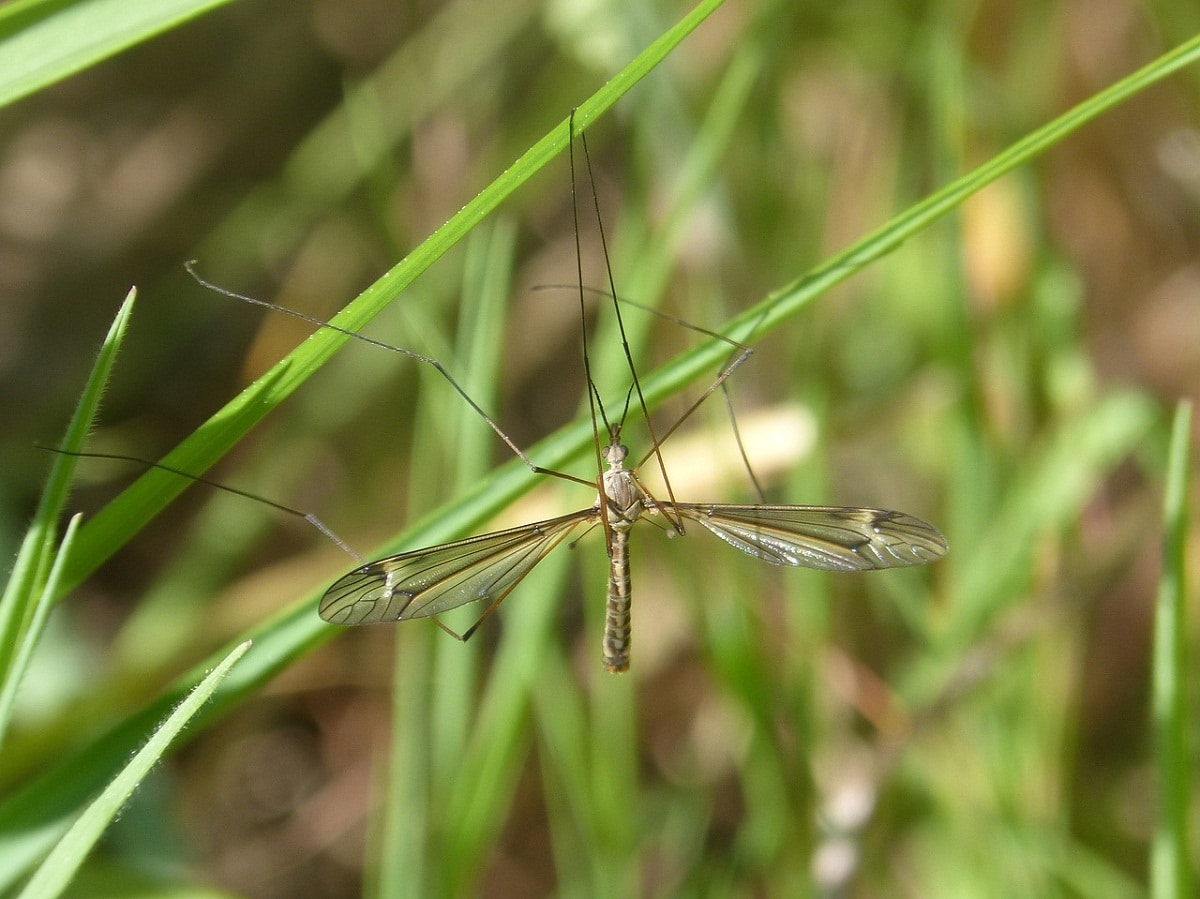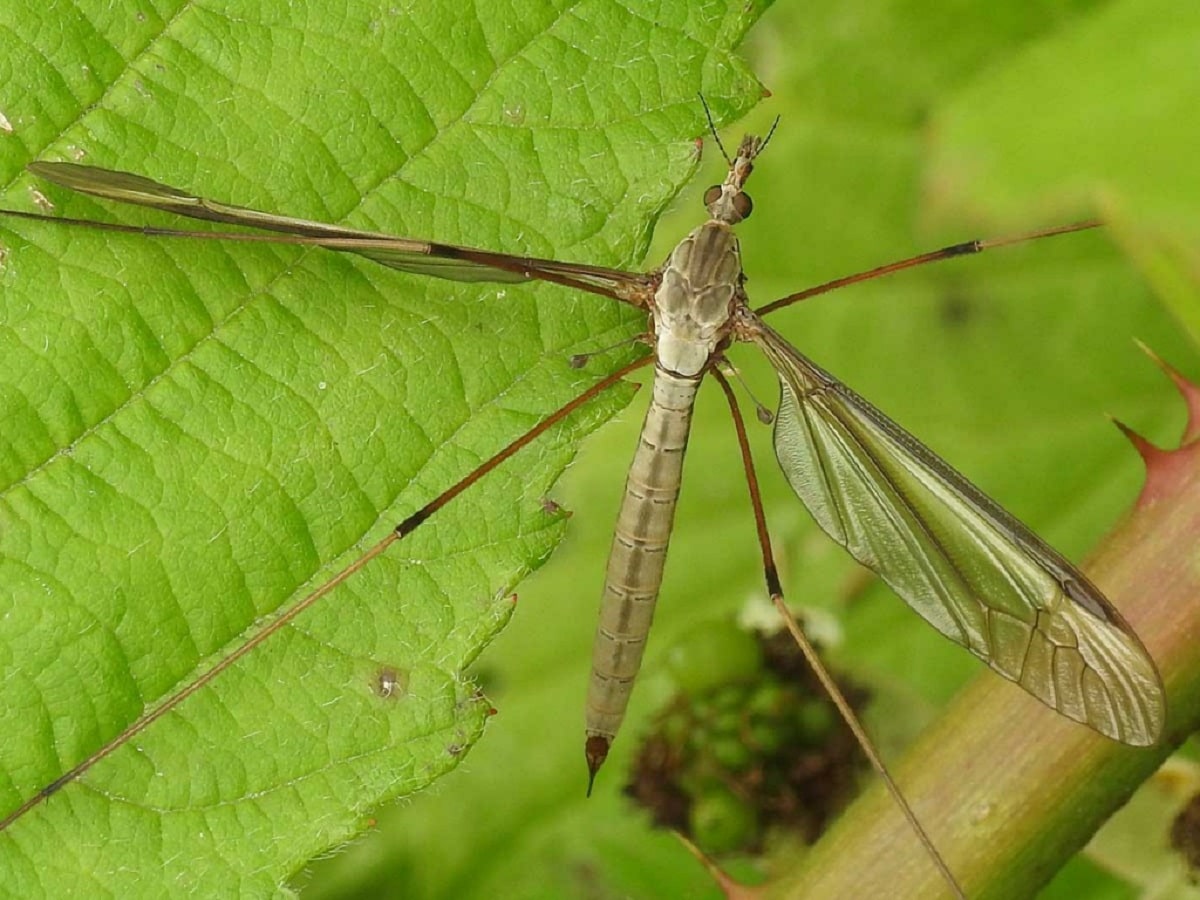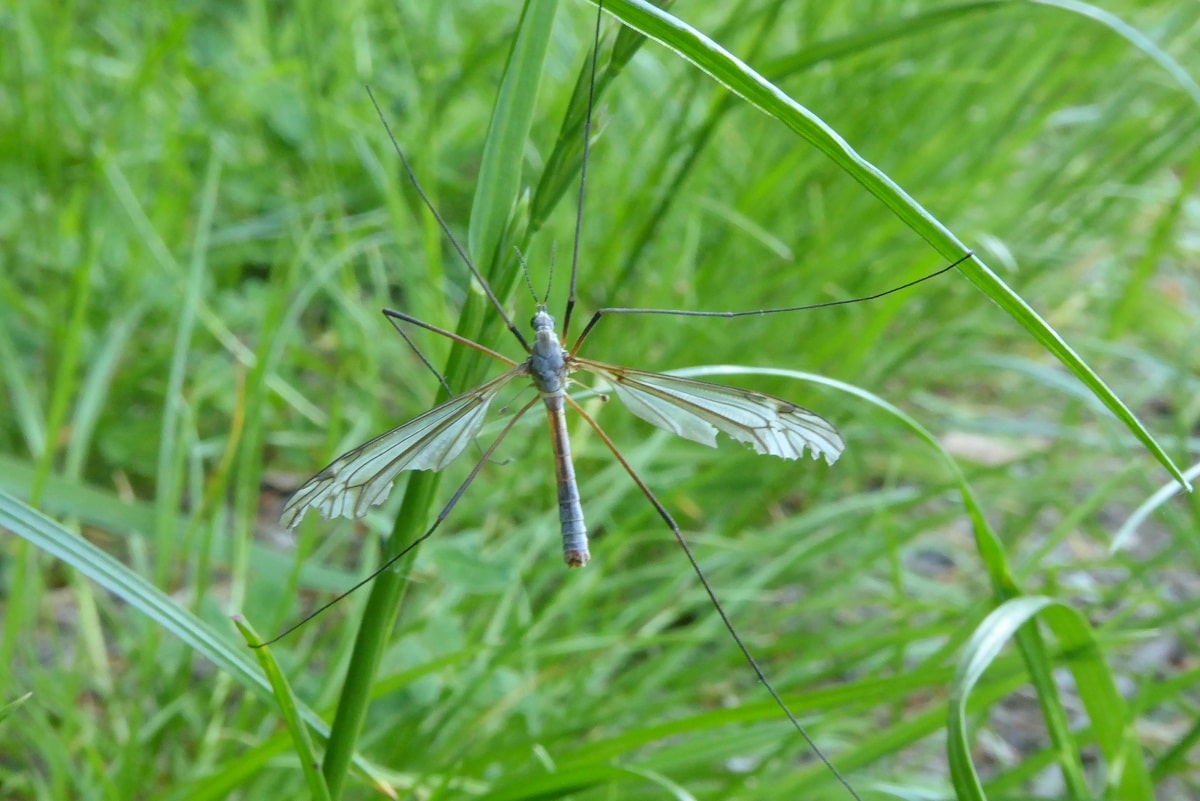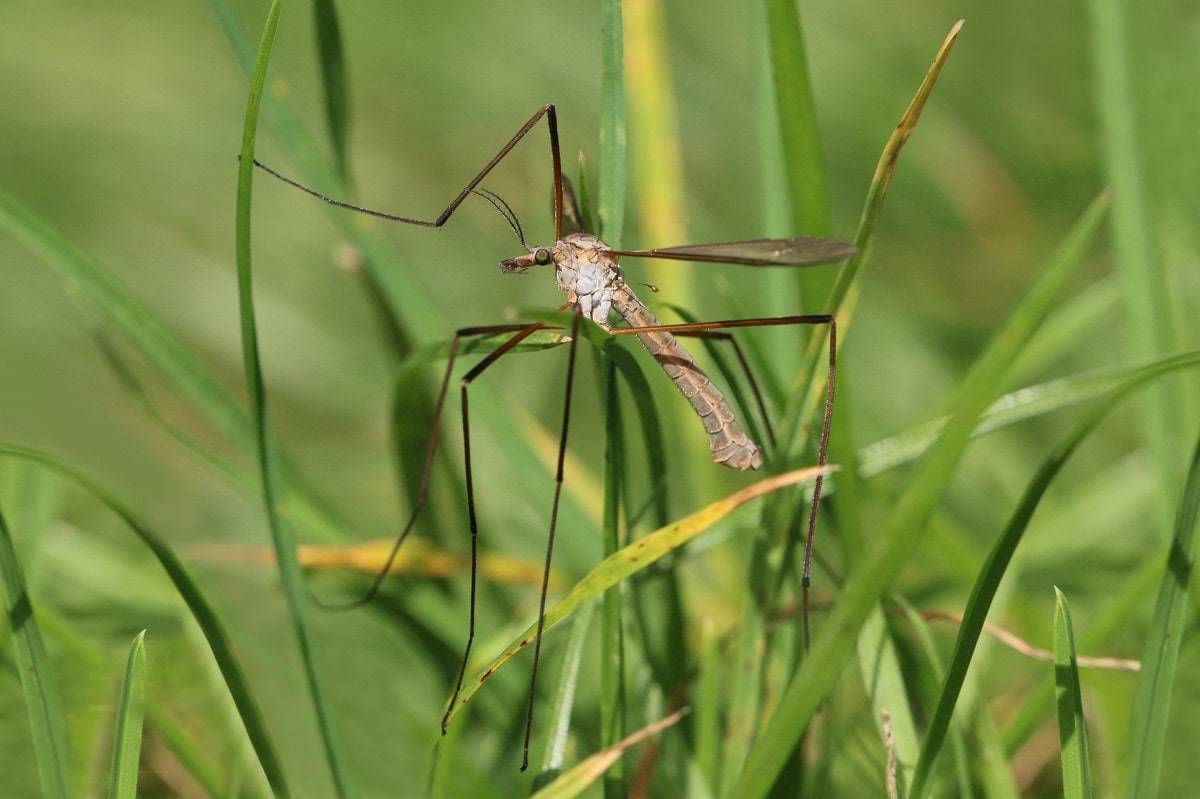
Do you have some kind of problem that is damaging the green lawn of your garden and you do not know what it is? Surely what you have an invasion caused by the crane-fly, which is a pest that in the beginning of its life are found underground, its larvae being the ones that cause significant damage to the soil and consequently to everything that grows in it.
Knowing what the typical is important, so we will show you how they develop and why in a short time they can become one of the greatest enemies of your lawn, or of the garden crops that you can have in your home and you do not want see them deteriorated.
What is the typical?

When we talk about typical we mean insects that are a pest of lawns and grass, representing one of the strongest threats that the soils of the different gardens can receive, together with the destructive action that the mole cricket.
It is not a wasp-shaped insect, but rather a fly, which for this reason is also often called cabbage mosquito on its adult specimens.
These are usually found in the grass or in the garden, laying their eggs inside the ground after having generated the mating. It is from those eggs that the larvae come that will do particular damage to the soil.
Taking into account that this type of mosquito has dimensions very similar to those of common mosquitoes, these can be confused with the others, but in the particular case of the typical ones, they do not have a stinger, therefore they are completely harmless to humans, even presenting a prominent size.
The truth is, in the particular case of the typical women in their adult periodThese will not represent great problems for the crops, since what they will do is feed on nectar or find themselves hunting other kinds of insects to prey on.
The problem for our crops appears when their eggs hatch and the larvae take over the entire root zone of crops and grass, causing really considerable damage to plantations from the ground up. This represents a threat to all types of orchards and gardens and that is why the typical plants become an enemy to eliminate.
Features
To take into account the particular morphology of a typical, we can get used to the idea that it is a mosquito and this represents a very particular similarity. Its head also has retractable characteristics, showing some extensions in its final part.
Typulas are usually seen in different gardens as a mosquito that shows even a larger size than conventional ones, since they can be about three centimeters in length in the case of the largest specimens and long, thin legs.

These legs are very developed, unlike its body and that is why they also tend to show some fragility, being able to detach from your body with minimal efforts.
Among the appearance characteristics that most characterize this type of insect are four stripes that run along its thorax, forming in its total composition, different shades that are between brown and dark yellow.
Their larvae
In the case of larvae, which are the ones that really mean a problem and they behave like a destructive pest of crops, they do not have legs and show a tonality that is close to gray, showing like other types of larvae, a body that in its shape resembles a cylinder, which has a retractable way of moving.
The larvae when they are in the adult period present a kind of coating that makes them almost indestructible and which has been called in many ways, taking into account its hardness, but perhaps the name "Leather Jacket" is the one that resonates the most in the world of biology.
When they are at their most pronounced stage of development, before going through the typical conversion process, These larvae can grow to the incredible size of 5 centimeterss in its largest specimens, being an average size between 3 and 4 centimeters.
We will find many larvae in a pasture or an orchard, but those that will later form the typicals have the particular characteristic that, when be touched will not roll, as they usually do, for example, black donut larvae and many others. Before they become a chrysalis, they could be about 4 centimeters thick.
The appearance of typical plants in the gardens It will depend on the weather conditions and when these specimens were generated. If these were generated during the autumn epics, the copies will appear during the months of September and October, while those that were generated during these autumn months, will appear during March and April.
The first thing that will be seen when a garden has a population of these, it's a big cloud with a strong invasion, that at the beginning we can think that they are simple mosquitoes. These typicals will be demonstrated by prowling the areas on those days when the temperatures are adequate and there is the necessary heat for them to carry out their footsteps.

But when there is excessive wind or temperatures are low, these they will be sheltered from the elements just by staying on the ground, it may be that they get up in certain situations, in the face of certain stimuli.
The only time that this type of insect can make a small kind of migration is during the days of mild temperature and total lack of wind. In these days, females will surpass males in flight distances, which will aim to find more fertile areas and green meadows, which are precisely the areas where they will deposit their larvae that become a factor of inconvenience.
The total life cycle of an adult specimen of typula does not will exceed fifteen days of life, which is usually its average, since many of these can live between 8 and 12 days approximately, while other specimens will be around between 15 and 18 days in our gardens.
In its reproduction, the female is in charge of launching the eggs as a shot of pellets and this usually happens either when they have landed somewhere or even in mid-flight, like a bombardment of eggs, like surface-to-air missiles.
Generally, the typical plants will release an average of 400 eggs, being able to reach up to 1000 units in some extreme cases, while in more minimal cases, we will have a floor of 150 eggs for each typical.
Transmission
There are different treatments to end the typical, so take note.
- The first thing to do that perform is a specific treatment starting in the month of September, and then repeat every month until February.
- What works best on this pest are insecticides specialized in this kind of insect. It goes without saying that the insecticides that we have at home, for flies and mosquitoes, are useless.
- It is also important to check the lawn for larvaeIn this way we will be preventing our lawn from being attacked.
Although the typical ones could be presented as harmless, their larvae could attack your entire garden, so you must be careful to get rid of them in the right way at the right time.